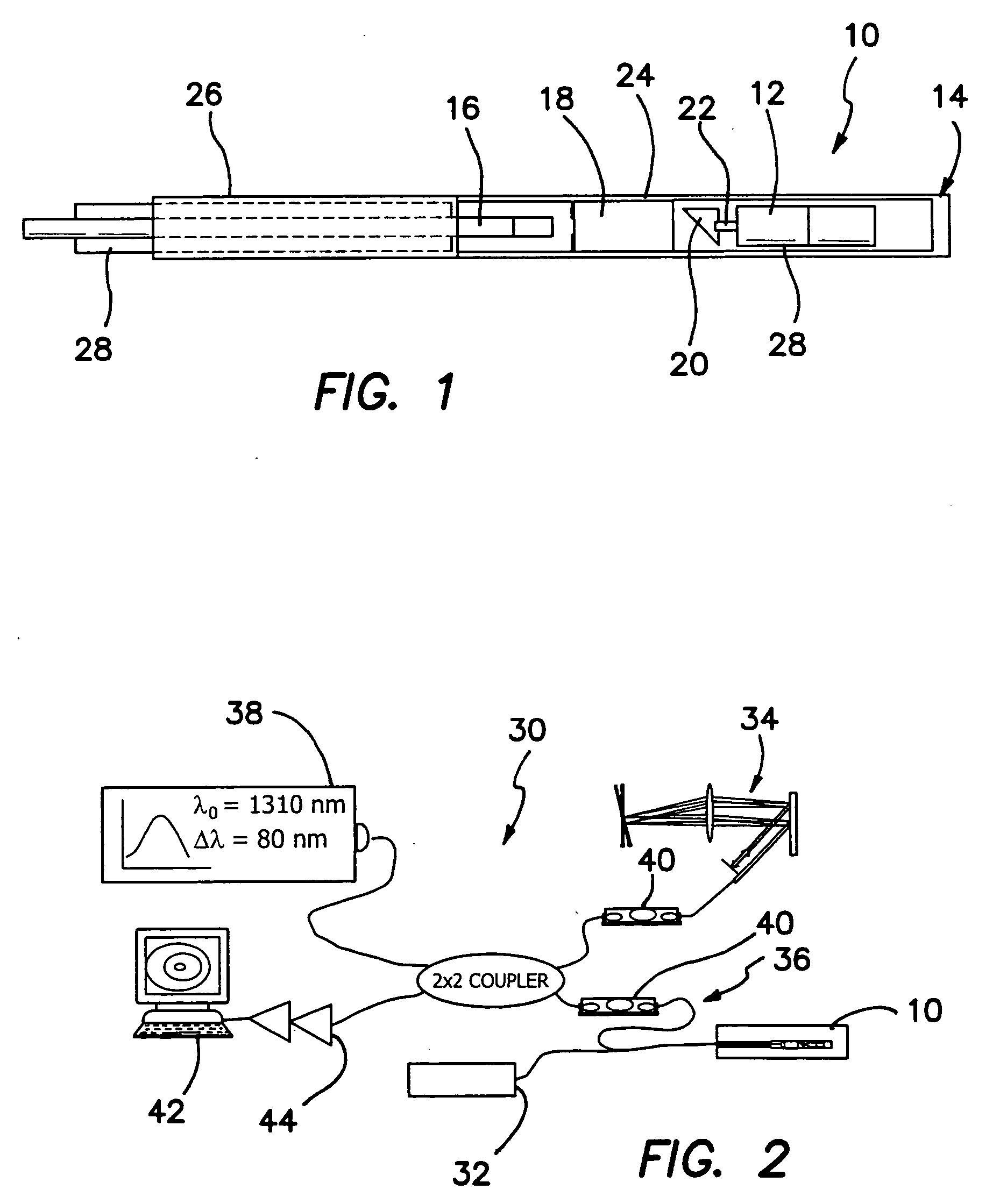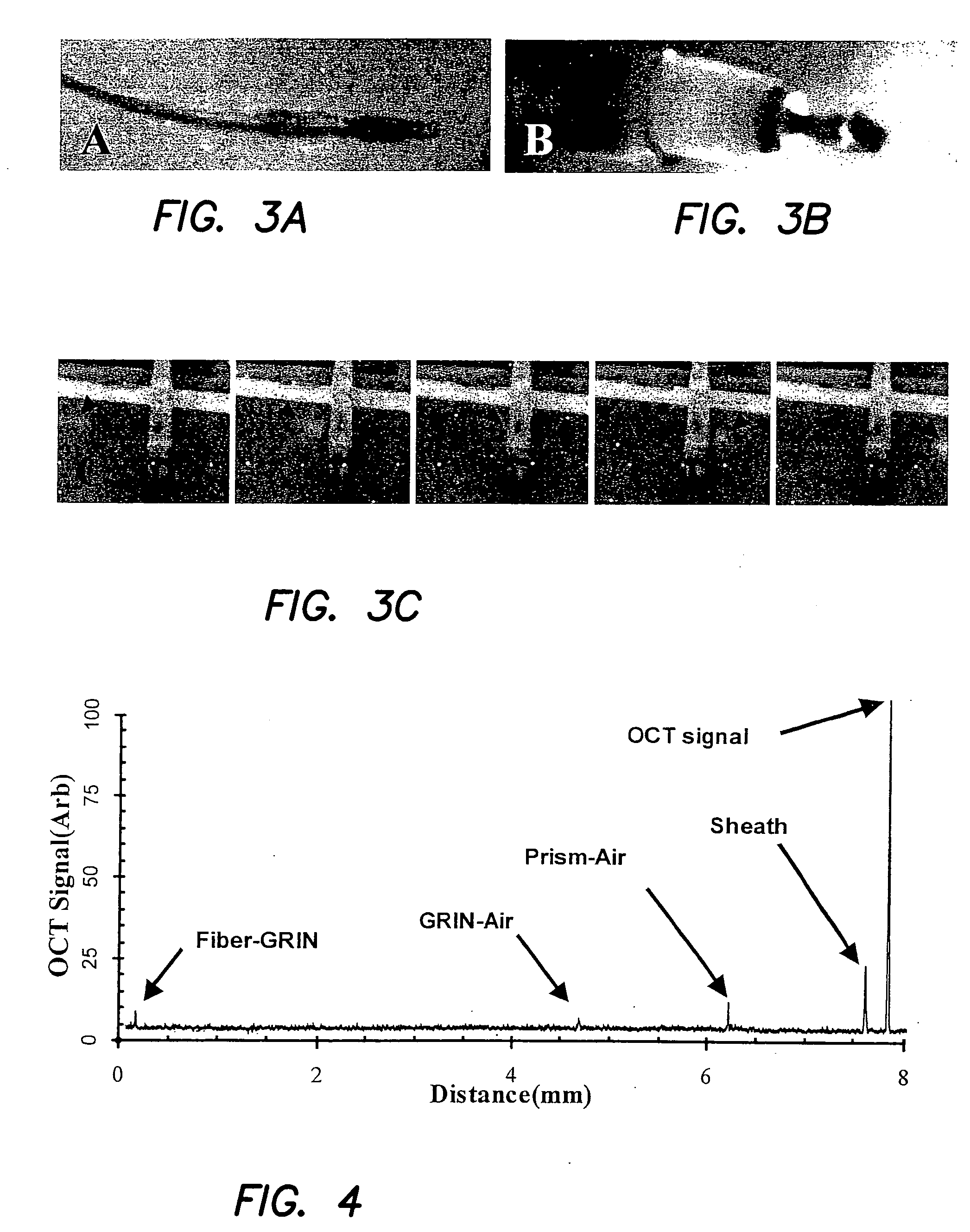Scanning probe using MEMS micromotor for endosocopic imaging
a scanning probe and endoscope technology, applied in the field of endoscopes, can solve the problems of limiting the spatial resolution to approximately 100 m, the current design of endoscopic oct probes is limited, and the high spatial resolution of tomographic imaging of in vivo tissue structure and physiology is not available as diagnostic tools, so as to reduce the angular rate output of the motor
- Summary
- Abstract
- Description
- Claims
- Application Information
AI Technical Summary
Benefits of technology
Problems solved by technology
Method used
Image
Examples
Embodiment Construction
[0037] The current invention overcomes each of the limitations of the prior art by using a microelectromachined silicon (MEMS) motor 12 near the tip 14 of the endoscope 10 to perform the scanning. No driving cable is required or used. A side cut-away plan view of the distal end portion of the illustrated embodiment of the endoscope 10 is shown in FIG. 1. The design of endoscope 10 is much simpler than the prior art designs. A single mode optical fiber 16 with or without a tapered tip is mounted to the GRIN lens 18 at the appropriate distance. A prism 20, which has a diameter or radial envelope within endoscope 10 smaller than the diameter of motor 12 is mounted on a shaft 22 or otherwise coupled to motor 12. In the preferred embodiment motor 12 provides a full rotary motive force or torque applied through shaft 22 to the prism 20. However, it is expressly contemplated that motor 12 will also supply an oscillatory motive force or torque to prism 20 through a predetermined angular int...
PUM
 Login to View More
Login to View More Abstract
Description
Claims
Application Information
 Login to View More
Login to View More - R&D
- Intellectual Property
- Life Sciences
- Materials
- Tech Scout
- Unparalleled Data Quality
- Higher Quality Content
- 60% Fewer Hallucinations
Browse by: Latest US Patents, China's latest patents, Technical Efficacy Thesaurus, Application Domain, Technology Topic, Popular Technical Reports.
© 2025 PatSnap. All rights reserved.Legal|Privacy policy|Modern Slavery Act Transparency Statement|Sitemap|About US| Contact US: help@patsnap.com



